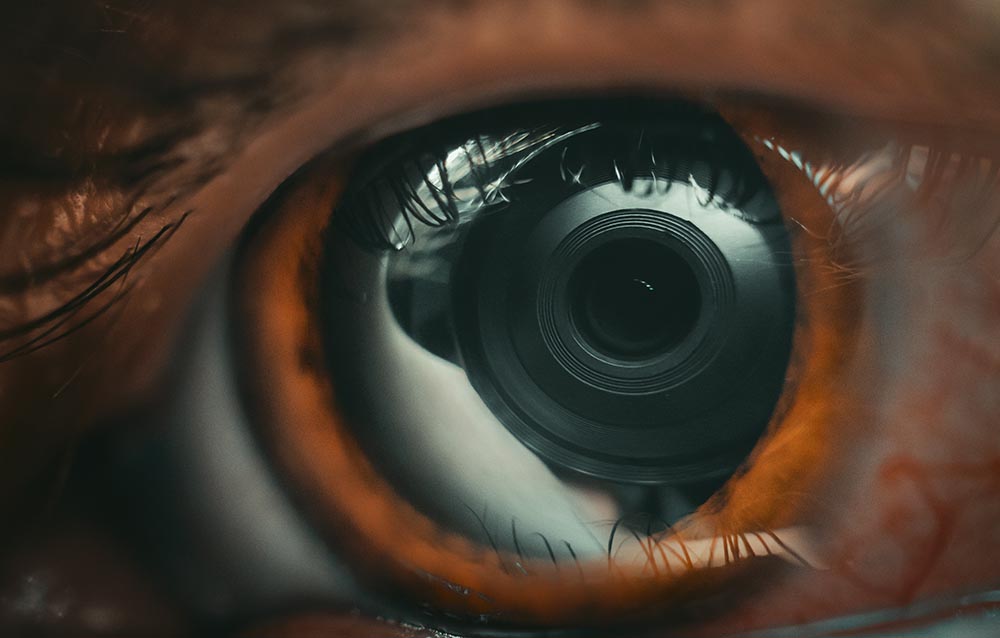What Focal Length Is the Human Eye? What You Need to Know!
Last Updated on

Cameras work in a similar way to eyes in the way that they capture and focus images. But there are a few distinct differences that affect measurements, like focal length.
The focal length of the human eye is around 22mm, but if you’re trying to compare it to the focal length of a camera, that’s a useless number.
We break it all down for you here and highlight a few other numbers that will give you an idea of what our eyes are capable of.

What Focal Length Is the Human Eye?
While the human eye has a focal length of around 22mm, it doesn’t mean if you’re using a camera lens with a 22mm focal length that you’ll get similar results.
The problem is that the human eye simply doesn’t work the same way as a camera. There are three differences between the human eye and a camera that makes focal length a terrible way to compare the two.
- We use both eyes to see.
- The backs of our eyes are curved.
- Our peripheral vision is less detailed.
A camera with a 50mm focal length most resembles what the human eye can see, but even that comparison is far from perfect. The truth is that no camera can capture exactly what the human eye can see, as there are simply too many differences between a camera and an eye!

What Is Focal Length?
It’s a bit of a complicated formula, but the general gist is that it’s where the points of light converge to form a focused image. In a camera, it’s the distance between the sensor and the mirror in the lens, and it describes the overall angle of view and the magnification that the camera has.
While the human eye works in a similar way, there are enough differences that it’s hard to compare the two.
What Resolution Is the Human Eye?
Some cameras have outstanding resolution numbers to produce great images, but compared to the human eye, it’s not even close.
The human eye has a resolution of about 576 megapixels. Some of the most powerful cameras on the planet have megapixel sensors of about 100, so the human eye is almost six times as powerful as those sensors.

How Many Refreshes per Second Can the Human Eye See?
While cameras can’t quite keep up in terms of resolution or even focal length, one area where technology has the edge is in refreshes per second. While the exact upper limit for frames per second (FPS) that the human eye can see varies from person to person, it maxes out somewhere between 60 and 90 FPS.
Some of the top refresh rates for electronics can exceed 480 FPS, but standard ones top out at around 120 FPS, which is more than enough.

Final Thoughts
There’s little doubt that our eyes are among our most impressive organs. Even with all the developments in technology out there, we still can’t capture everything that the human eye can.
So, while cameras are outstanding pieces of equipment, don’t take your eyes for granted and all that they can accomplish!
Featured Image Credit: Digital Blackout, Shutterstock
About the Author Robert Sparks
Robert’s obsession with all things optical started early in life, when his optician father would bring home prototypes for Robert to play with. Nowadays, Robert is dedicated to helping others find the right optics for their needs. His hobbies include astronomy, astrophysics, and model building. Originally from Newark, NJ, he resides in Santa Fe, New Mexico, where the nighttime skies are filled with glittering stars.
Related Articles:
What Is the Best Binocular Magnification for Hunting? Optical Features Explained
How to Clean a Refractor Telescope: Step-by-Step Guide
How to Clean a Telescope Eyepiece: Step-by-Step Guide
How to Clean a Rifle Scope: 8 Expert Tips
Monocular vs Telescope: Differences Explained (With Pictures)
What Is a Monocular Used For? 8 Common Functions
How to Clean a Telescope Mirror: 8 Expert Tips
Brightfield vs Phase Contrast Microscopy: The Differences Explained
